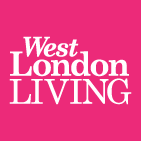Around 18 months ago, London price properties were growing month-on-month, with the average cost of a property in the capital set to break the £500,000 barrier.
In July, however, London house prices for the 17th month in succession, against the backdrop of continued Brexit uncertainty and falling demand. In the year ending July 2019, the average cost of a property in the capital declined by 1.4% to £477,813, whilst unsurprisingly the amount of flats and houses sold also dropped to just 5,917.
Even as prices fall, however, the cost of real estate in London remains uncomfortably high for many. With this in mind, it’s important to identify the best time to rent a property in the capital in order to optimise your savings.
The Basics – How to Shop for a Property
Before we delve into the London market, it’s important to understand the general rules surrounding sourcing a rental property in the UK.
We’d definitely recommend that you start searching the market approximately four to six weeks before you want to move, as this helps you to strike the ideal balance between shortlisting viable homes and being as prepared as possible.
You also need to consider the listed rental price alongside the other costs that are affiliated with renting (or buying) real estate, from the local council tax band and estimated energy bills to the likely contents insurance premiums and the price of securing tenants liability insurance.
It’s also worth sourcing all of the necessary references and documents before you start your rental property search, as this will save time and reduce delays when making an initial application.
What About London – When Should you Look to Rent?
A quick glance confirms that most rental enquires in London are processed during the summer, with June and July and August the most popular times to relocate.
This doesn’t mean that they’re the best, however, as the fact remains that these months are likely to see the type of increased demand that enables landlords to place a premium on rental rates.








